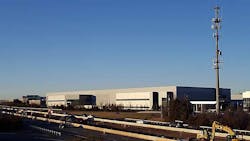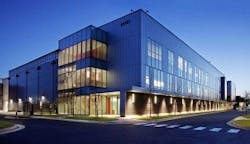A Reflection of 10 Years of Data Center Alley in Loudoun County
In this week’s Voices of the Industry, Buddy Rizer, CEcD at Loudoun Economic Development, reflects on what he’s learned from 10 years in Loudoun County’s data center alley.
In May of 2007, I was brought to Loudoun County, Virginia with a clear mission: grow the commercial tax base. At that time, Loudoun, home to Dulles International Airport and a stone’s throw from Washington, D.C., already had one of the fastest-growing populations in the country. In order to keep up with that growth, as well as provide the schools, roads and public services needed, our Board of Supervisors recognized the need to build our business base.
Buddy Rizer, CEcD, Loudoun Economic Development
As we crafted our economic development strategy, we began to focus on another unique asset of our community: the technology infrastructure that existed, in large part, thanks to the 1997 arrival of America Online, the company that grew into an Internet giant in our community. With the fast growth of AOL, UUnet/Worldcom, PSI Net and others, Loudoun became a connectivity hub with massive amounts of available fiber. In particular, when the MAE East facility moved to Loudoun County, we became a crosspoint for approximately 70 percent of the world’s Internet traffic.
After a half-dozen hard years following the popping of the “dot-com bubble,” it was obvious that as the technology economy was coming back, Loudoun was sitting on assets that could place it in the center of the Internet resurgence. In addition to the fiber network, Ashburn had available land, water access and an abundance of reliable power. Virginia had dedicated significant resources to the transmission grid, and our power provider, Dominion Electric, is world-class at protecting the transmission grid and rarely has outages. Loudoun was also home to companies such as Equinix and Dupont Fabros, companies that were among the first to build and offer data center capacity in Loudoun County.
With that base to build on, Loudoun Economic Development set out to put in place an environment where data center companies could thrive. I started attending conferences, and embarked on getting a mission-critical certification so that we could understand what was important to the industry. We worked with smart lawmakers in the Commonwealth of Virginia to craft best-in-class incentives. We created a fast-track process that has paved the way for record timelines for entitlement and construction. Finally, we started marketing what by then we were calling “Data Center Alley” as the top location for data center development.
The Equinix DC-11 data center in Ashburn, Virginia in the heart of Northern Virginia’s “Data Center Alley.” (Photo: Equinix)
In his terrific book “Tubes: A Journey to the Center of the Internet,” Andrew Blum describes it like this: “Ashburn, Virginia is a small town that Internet people think of as a giant city. They toss around ‘Ashburn’ as if it were London or Tokyo, and often in the same sentence.” He goes on to say that “the Internet works because every network is connected, somehow, to every other. Where do those connections physically happen? More than anywhere else in America, the answer is ‘Ashburn.’ This is the bullseye of America’s Internet.”
[clickToTweet tweet=”Buddy Rizzer – We have identified another 43 sites where data centers are possible in Loudoun. #datacenters” quote=”Buddy Rizzer – We have identified another 43 sites where data centers are possible in Loudoun. #datacenters”]
Today, Loudoun is home to more than 10 million square feet of data center space, with another 4.5 million in development or in planning. Most major data center operators, including Digital Realty, RagingWire, CyrusOne, Sabey, and the afore-mentioned Equinix and Dupont Fabros continue to grow in Loudoun County. Recently, we have identified another 43 sites where data centers are possible in Loudoun, meaning more opportunity for the Internet’s largest and fastest-growing market.
If you want to learn more about doing business in Ashburn’s “Data Center Alley,” please contact Loudoun Economic Development at 1-800-LOUDOUN or email me at [email protected].




